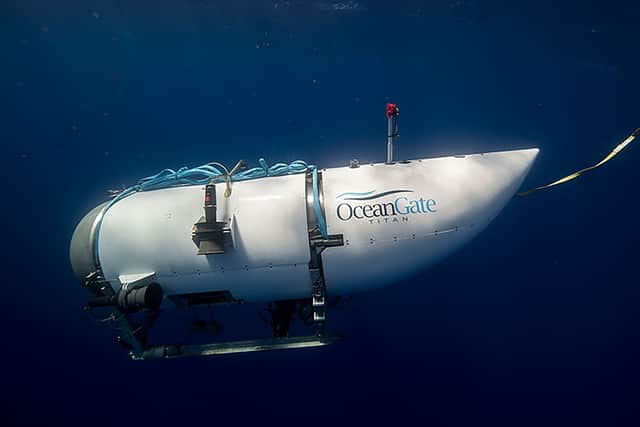Titan submersible: OceanGate ‘death’ waiver could be void, warns lawyer, after five men died on voyage to Titanic
and live on Freeview channel 276
The ‘death’ waiver signed by the five men who tragically died aboard OceanGate’s Titan submersible could actually be void, a lawyer has said.
OceanGate CEO Stockton Rush, Hamish Harding, Paul-Henri Nargeolet, Shahzada Dawood, and Suelman Dawood, who was just 19 years old, were all aboard the deep-sea vessel on Sunday 18 June when it departed for its expedition to see the Titanic wreck site. But just a few hours into the dive, communication with the Titan was lost and it was reported missing - resulting in the launch of a huge search operation.
Advertisement
Hide AdAdvertisement
Hide AdRescuers were racing against the clock to find and rescue the passengers, as the submersible only had a limited oxygen supply. Some had predicted that the Titan may have imploded underwater - and these fears were sadly confirmed on Thursday 22 June when the US Coast Guard told a press conference that debris found near the wreckage of the Titanic “is consistent with a catastrophic implosion of the vessel”.
Before boarding the doomed vessel, all five passengers had to sign an agreement - which many have dubbed a ‘death waiver’ - designed to protect OceanGate from liability should anything go wrong on the dive. This includes death.
The three-page document, first published by TMZ, highlights the risks involved in the tourist expedition - stating that there is the possibility of “physical injury, emotional trauma, and death” - and that this could occur following a “malfunction or failure of the submersible”.


Shockingly, the waiver also admits that the vessel “has not been approved or certified by any regulatory body, and may be constructed of materials that have not been widely used in human occupied submersibles.”
Advertisement
Hide AdAdvertisement
Hide AdBut while all passengers signed the document, which includes the statement “I understand the inherent risks in the activities that will be undertaken during the operation, and I hereby assume full responsibility for all risks of property damage, injury, disability, and death”, there is a chance that this waiver may not be enforceable.
Timothy E Allen, a lawyer and ex-Secret Service Agent, has said there are some situations “where waivers may be deemed invalid”, such as if gross negligence can be argued. He explained: “Submarines operate in a high-pressure environment, and any flaws or weaknesses in the construction, design, or materials used can potentially lead to catastrophic failures such as implosion,” Allen said.
“If it can be established that the implosion was caused by inherent defects in the mechanics or engineering of the submarine, the responsible party may be held liable, even if a waiver was signed.” This means the families of those who died on the expedition may be able to sue OceanGate - and the company could be found liable for the tragic loss of life.
Canada’s Transportation Safety Board has announced it will launch an investigation into the implosion which killed all five men aboard the Titan. In the US, a separate probe will be launched - led by the US Coast Guard who headed up the search operation.
Advertisement
Hide AdAdvertisement
Hide AdSuperintendent Kent Osmond, of the Royal Canadian Mounted Police, said on Friday (23 June) that a team of investigators had been established “with the sole purpose” of determining whether a criminal investigation would be warranted.
Comment Guidelines
National World encourages reader discussion on our stories. User feedback, insights and back-and-forth exchanges add a rich layer of context to reporting. Please review our Community Guidelines before commenting.
